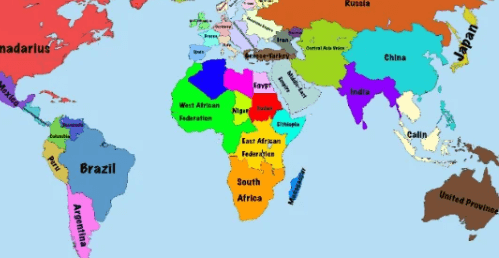Map:V-Xzjijklp4= World

The advent of Map V-Xzjijklp4 represents a significant advancement in how we interact with geographical data, offering an array of features designed to facilitate in-depth spatial analysis. Its applications span across numerous sectors, from urban planning to environmental science, demonstrating its versatility and relevance. Furthermore, the emphasis on user experience and accessibility ensures that a broad audience can leverage this tool effectively. As we explore the implications of such a transformative resource, one might wonder how these capabilities could reshape our understanding of complex global interactions.
Overview of Map Features
The map, designated V-Xzjijklp4, incorporates a range of advanced features that enhance its utility for spatial analysis and geographical interpretation.
Key aspects of its map design include sophisticated interactive elements, allowing users to manipulate data layers and visualize information dynamically.
This interactivity fosters a deeper understanding of spatial relationships, empowering users to explore geographical contexts with unprecedented freedom and precision.
See also: Map:Sltnhc9ao9w= England
Applications in Various Fields
Various fields leverage the capabilities of the V-Xzjijklp4 map to enhance decision-making processes, improve resource management, and facilitate research through comprehensive spatial data analysis.
Geospatial analysis empowers professionals to uncover patterns and trends within complex datasets, while advanced data visualization techniques render insights accessible.
This fusion of technology supports strategic planning, environmental monitoring, urban development, and disaster response, driving progress across diverse sectors.
User Experience and Accessibility
User experience and accessibility play critical roles in maximizing the effectiveness of the V-Xzjijklp4 map, ensuring that a diverse range of users can easily interact with its functionalities and derive meaningful insights from the data presented.
Implementing inclusive design principles and actively soliciting user feedback enhances usability, enabling the map to cater to varied needs while fostering an environment conducive to exploration and understanding.
Conclusion
In summary, Map V-Xzjijklp4 serves as a cutting-edge instrument for geographical exploration, integrating advanced interactive features with dynamic data visualization.
Its applications across urban development, environmental monitoring, and strategic planning illustrate its versatility and importance in analyzing complex spatial relationships.
By adhering to inclusive design principles and prioritizing user experience, the map fosters an environment conducive to exploration.
Ultimately, this tool enables users to navigate the intricacies of spatial data, facilitating informed decision-making and insights that are, quite literally, a map to the future.




